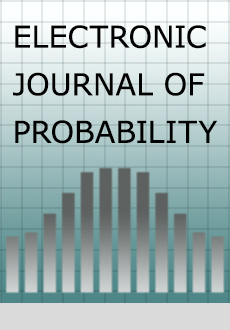Abstract
The so-called Deffuant model describes a pattern for social interaction, in which two neighboring individuals randomly meet and share their opinions on a certain topic, if their discrepancy is not beyond a given threshold $\theta$. The major focus of the analyses, both theoretical and based on simulations, lies on whether these single interactions lead to a global consensus in the long run or not. First, we generalize a result of Lanchier for the Deffuant model on $\mathbb{Z}$, determining the critical value for $\theta$ at which a phase transition of the long term behavior takes place, to other distributions of the initial opinions than i.i.d. uniform on $[0,1]$. Then we shed light on the situations where the underlying line graph $\mathbb{Z}$ is replaced by higher-dimensional lattices $\mathbb{Z}^d,\ d\geq2$, or the infinite cluster of supercritical i.i.d. bond percolation on these lattices.
Citation
Olle Häggström. Timo Hirscher. "Further results on consensus formation in the Deffuant model." Electron. J. Probab. 19 1 - 26, 2014. https://doi.org/10.1214/EJP.v19-3116
Information





